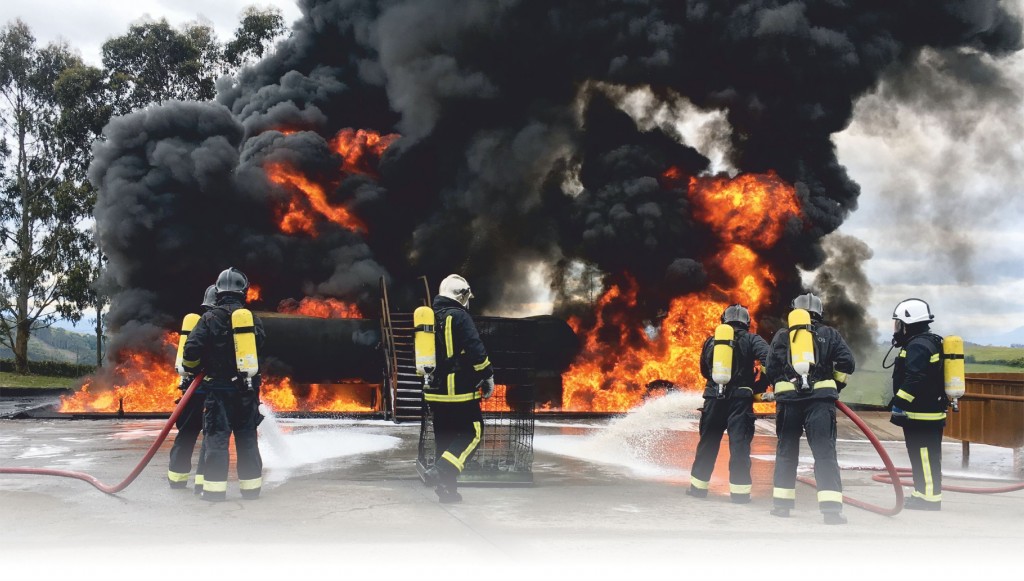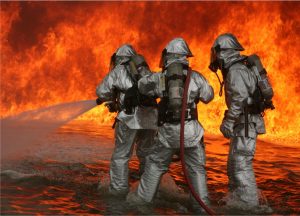 Gather stakeholders and resources, capitalize on the holidays and perform a community education blitz after tragedy to stop preventable fire deaths
Gather stakeholders and resources, capitalize on the holidays and perform a community education blitz after tragedy to stop preventable fire deaths
Another tragic fire. Another family destroyed. Another community in shock. Another fire department reeling.
It's a headline you never want to read, but even more devastating during the holiday season; “5 Ohio children killed in house fire.”
I spoke with Samantha Hoffmann, a fire prevention officer with the Barrie (ON) Fire and Emergency Service about the incident. “It's just absolutely devastating. I can't even imagine for the family or for those firefighters that were on scene. And it's all so preventable,” she said. Every year, roughly 75 percent of fires in residential dwellings are the result of adult human behaviors. (Photo/USAF)
We say preventable, because in the U.S. every year, roughly 75 percent of fires in residential dwellings are the result of adult human behaviors like:
Unattended cooking
- Improper use of space heaters
- Improper disposal of smoking materials
- Improper disposal of ashes from wood-burning appliances
- Overloaded electrical circuits
These are all causes that can be eliminated by human behavior. As Gordon Graham, SME on risk in public safety, says, “predictable is preventable.”
Though the Youngstown fire is still under investigation, the data shows how many home fires could be eliminated by human behavior.
Fire department leaders have an opportunity to act in the face of tragedy, and create a positive step for their communities by aggressively acting to inform, educate and move the adults in their community to action. Here are four strategies for educating your communities in fire prevention after a tragedy.
1. RECRUIT LOCAL PARTNERS TO SPREAD YOUR FIRE PREVENTION MESSAGE
If a fire tragedy occurs in your community, perform a blitz attack. Your window of opportunity is about 72 hours. The public's attention span in general is growing shorter all the time and the “noise” of everyday life – work, play, TV, the internet and social media – makes it more difficult to conduct a high impact event across your community. But that's exactly what you want to do.
In the first 24 hours, mobilize all fire department personnel, other allied governmental agencies (e.g., law enforcement, utility department, public works and teachers) and community action groups (e.g., Boy Scouts and Girl Scouts, Lions Club, Rotary Club) to prepare to receive further instructions over the next 24 hours. Right now, you're asking for their commitment to:
1. Show up.
2. Do what they're asked.
3. Talk to people.
You're lining up your forces to use the information and materials you're going to provide to them. The overall message is: fires are preventable and so is the loss of life.
2. PROCURE AND REPRODUCE FIRE PREVENTION EDUCATIONAL MATERIAL
The U.S. Fire Administration has a great library of public outreach material that can be downloaded for reproduction at no charge. For your blitz, you want the one-pagers on smoke alarms and home fire escape plans. Your blitz needs a singular focus and it needs to be one that has a direct link to the tragic fire: have working smoke alarms and when you hear the alarm, get out!
Use a printing service that will do the work for you on credit. You don't have the time to get out and solicit financial support in the community; that's going to have to wait until the blitz is completed. Time is of the essence!
3. IDENTIFY CAPTIVE AUDIENCE TARGETS
Identify and target captive audiences in the community for the personnel you've mobilized. The desired impact of having people go out in public is two-fold: Physical presence provides a sense of urgency and importance that is difficult to attain.
Direct them to get out with the printed materials you've had produced and hand-deliver them to those identified captive audiences at the identified locations, such as:
- Parents waiting in line to drop off or pick up their children at school
- Religious services at churches, synagogues and mosques
- Movie theaters (in the lobby before movie starts)
- Holiday events in the community
- Diners at popular local restaurants
Use your imagination for more location ideas. Avoid locations where people are mobile (e.g., shopping centers) because they're already on a mission and won't take the time to stop and listen for even a few seconds. And even if they do stop, they're not going to be in the receive mode.
4. MAXIMIZE USE OF YOUR SOCIAL MEDIAL PLATFORMS
 Use your social media platforms (e.g., Twitter, Facebook, and Instagram) to promote and amplify your face-to-face work to the community. Conduct Facebook Live sessions from a couple of your targeted sites. Post short (15 to 20 seconds) video clips on Twitter and Instagram from those sites as well and use a common hashtag for the blitz, such as #NoFireDeaths or #StopFireDeaths #DoItForYou #LookUpandSpeakUp
Use your social media platforms (e.g., Twitter, Facebook, and Instagram) to promote and amplify your face-to-face work to the community. Conduct Facebook Live sessions from a couple of your targeted sites. Post short (15 to 20 seconds) video clips on Twitter and Instagram from those sites as well and use a common hashtag for the blitz, such as #NoFireDeaths or #StopFireDeaths #DoItForYou #LookUpandSpeakUp
Encourage your mobilized force to promote and amplify what's happening in the community on their social media accounts as well. Ensure that everyone is using the same hashtags for all their posts.
Do a Facebook Live session showing one of your firefighters helping a family to draw up their home fire escape plan and then practice it. Or better yet, make two separate sessions; one focused on planning with one family and another showing the drill taking place with another family.
Do the best you can to include men, women and children who are representative of your community's demographics. Critical messages are usually better received when people hear them from someone who looks like them.















































